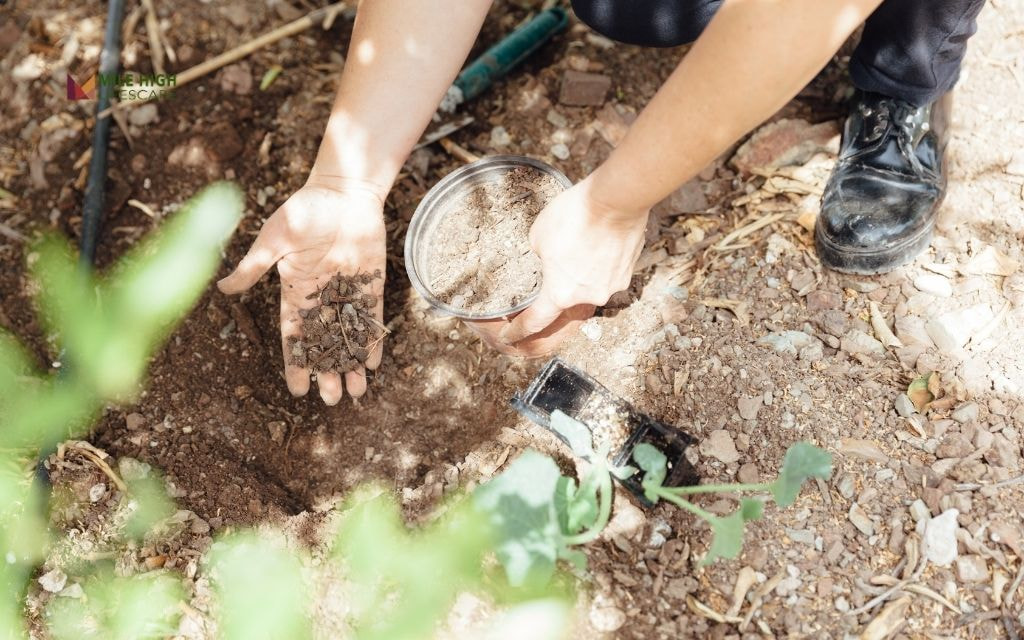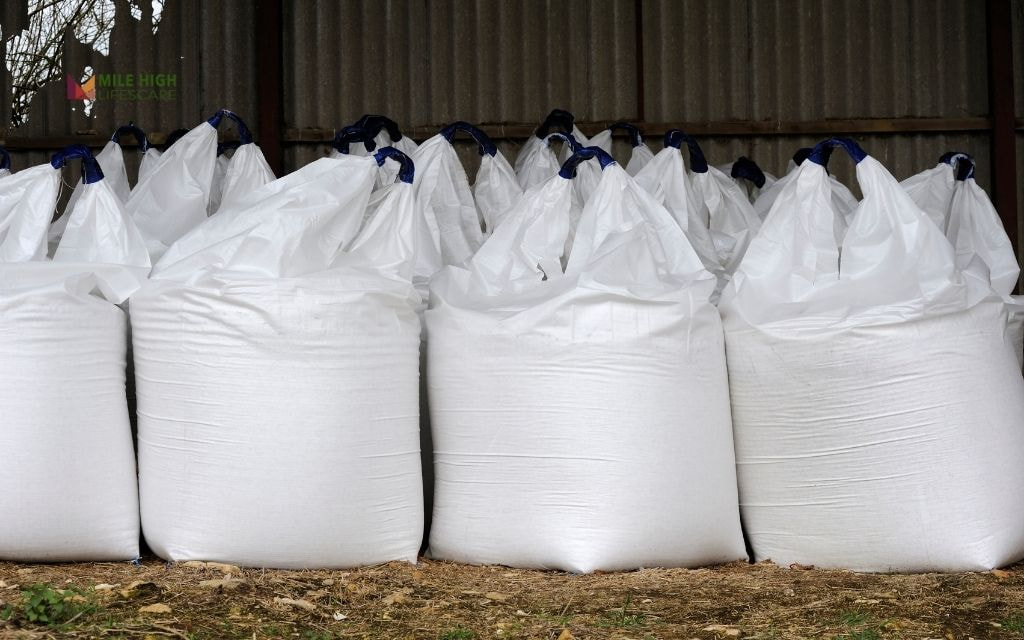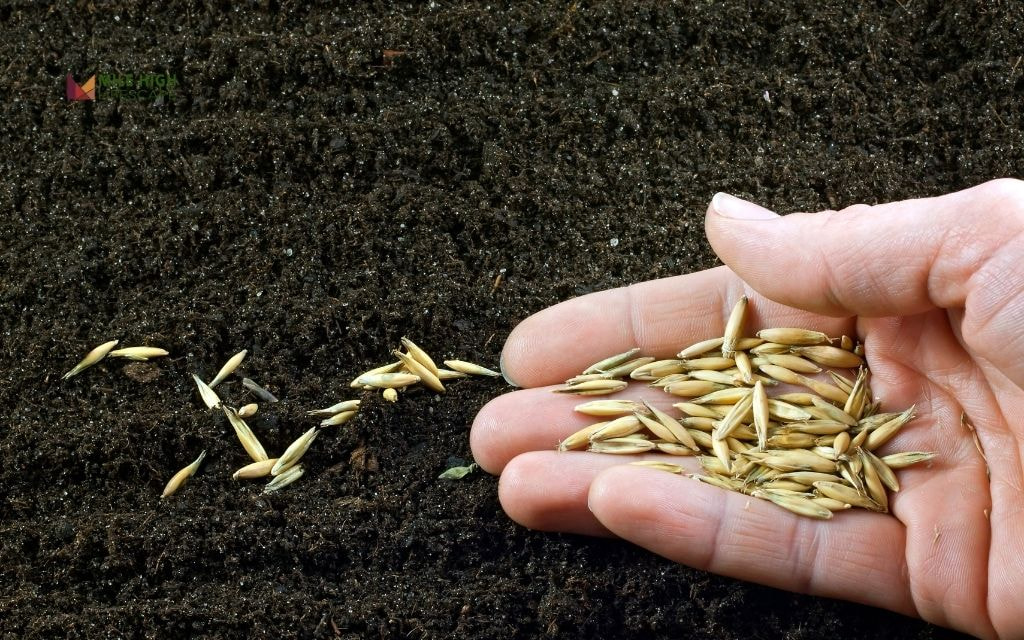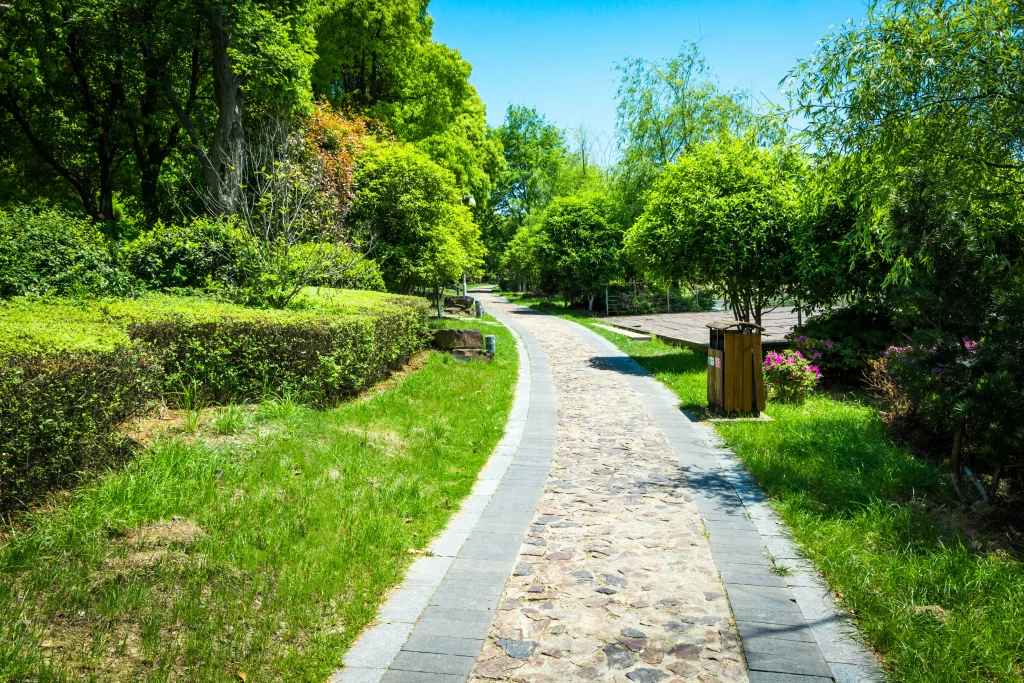Achieving that perfect, lush lawn in Colorado can feel like an uphill battle. Between the semi-arid climate, unpredictable weather patterns, and high elevation challenges unique to Denver, many homeowners find themselves confused about when to seed, when to fertilize, and whether these tasks can be done simultaneously.
The good news? With the right approach to fertilizer and lawn seed, you can transform your patchy, struggling lawn into a vibrant green carpet that stands up to Colorado’s challenging conditions.
In this comprehensive guide, we’ll walk you through everything you need to know about fertilizer and lawn seed applications in Colorado – from optimal timing and product selection to step-by-step techniques and common pitfalls to avoid.
Can You Apply Fertilizer and Lawn Seed at the Same Time?
Yes, you can apply fertilizer and lawn seed simultaneously in Denver lawns, but it requires using the right products and techniques. This combined approach can be particularly effective in our region’s shorter growing season, allowing you to maximize your lawn care efforts in a single application.
Benefits of applying fertilizer and lawn seed together:
- Saves valuable time during Denver’s narrow planting windows
- Gives new grass seedlings immediate access to essential nutrients
- Ensures young roots develop more robustly from the start
- Creates more uniform coverage across your lawn
- Reduces the number of lawn care maintenance tasks
Potential drawbacks to consider:
- Risk of seedling damage if using the wrong fertilizer formula
- Possible nutrient competition between established grass and new seedlings
- May require more precise watering management
- Not ideal for all lawn conditions or grass varieties
For Denver’s unique climate, it’s crucial to select starter fertilizers specifically designed for new lawns. These typically feature lower nitrogen and higher phosphorus ratios (such as 16-20-0 or 18-24-6), which promote stronger root development without burning delicate seedlings.

When Is the Best Time to Fertilize and Seed a Lawn in Denver?
In Denver’s challenging climate, timing is everything when it comes to successful lawn seeding and fertilization.
Fall Application
Fall (late August through mid-October) represents the prime opportunity for both fertilizing and seeding Colorado lawns. During these weeks, soil temperatures remain warm enough for germination while air temperatures begin to cool, creating ideal conditions for root development.
Additionally, weed competition decreases significantly in fall, allowing your grass seed to establish without fighting aggressive summer invaders. The natural increase in moisture during fall months also helps maintain consistent soil dampness crucial for seed germination.
Spring Applications
Spring applications (mid-April to early June) represent your second-best option, though they come with additional challenges.
Colorado’s spring weather can be wildly unpredictable, with late frosts potentially damaging new seedlings. However, if your lawn suffered winter damage, spring application may be necessary for recovery.
Best Times to Seed and Fertilize Denver Lawns
| Timeframe | Action | Best For | Notes for Denver Climate |
| Late August – Early October | Apply seed + starter fertilizer | New lawns, major renovations | Ideal conditions for cool-season grass establishment |
| April – Early May | Apply seed + starter fertilizer | Lawn repair, thin areas | Monitor spring snowstorms, protect seedlings |
| Mid-May – July | Avoid new seeding, light fertilizing only | Existing lawn maintenance | High evaporation risk, water restrictions common |
| July – Mid-August | Avoid all seeding and heavy fertilizing | N/A | Heat stress period, conserve water |
Remember that Denver’s elevation affects both temperature patterns and UV intensity. Our region’s soil warms more slowly in spring and cools more gradually in fall compared to lower elevations, extending our fall planting window slightly but requiring more patience in spring.
How to Choose the Right Grass Seed for Colorado Climate
Colorado’s climate demands careful selection of grass varieties that can withstand our temperature extremes, limited precipitation, and intense sunlight.
Cool-season grasses perform best in the Front Range region, providing the durability needed for our challenging conditions.
For most Denver properties, seed blends combining two or more of these grasses provide the best performance across varying lawn conditions.
Look for seeds coated with technologies that enhance moisture retention – these products can improve germination success rates by up to 30% in our dry climate by creating a water-absorbing barrier around each seed.

Kentucky Bluegrass
- Produces a rich, dense turf with excellent recovery potential
- Drought tolerance improves after establishment
- Requires regular irrigation (approximately 2.5″ per month in summer)
- Excellent cold hardiness for Denver’s winters
- Best for sunny areas with good irrigation systems
Tall Fescue
- Superior drought tolerance once established
- Quick germination (7-14 days) and good traffic tolerance
- Deeper root system (up to 2-3 feet) reduces watering needs
- Maintains color during moderate drought periods
- Handles heat stress better than other cool-season options
- Ideal for lawns with limited irrigation capabilities
Fine Fescue
- Exceptional shade tolerance for north-facing or tree-covered yards
- Requires minimal fertilization compared to other varieties
- Lowest water requirements among cool-season grasses
- Maintains good appearance with less maintenance
- Perfect for naturalized areas or low-traffic sections
Perennial Ryegrass
- Fastest germination rate (5-7 days) for quick establishment
- Good traffic tolerance for active family yards
- Often included in seed blends to provide quick coverage
- Less cold-hardy than bluegrass; may require spring reseeding
- Best used in blends rather than as a standalone
Choosing the Right Fertilizer for New or Overseeded Lawns
Selecting appropriate fertilizer proves just as important as choosing the right grass seed, particularly when establishing new lawns in Colorado’s challenging soil conditions. The fertilizer you select should support germination and early root development without causing damage to delicate seedlings.
Starter fertilizers differ significantly from standard lawn maintenance formulations. These specialized products feature higher phosphorus (P) content—the middle number in the N-P-K ratio on fertilizer labels – which stimulates root development.
Meanwhile, they contain moderate nitrogen levels to promote controlled top growth without overwhelming young plants.
| Fertilizer Type | Typical NPK Ratio | Benefits | Recommended For | Denver Considerations |
| Organic Starter | 3-5-3 to 5-10-5 | Slow-release, builds soil health, safe for pets/children, improves drought resistance | New lawns, environmentally conscious homeowners | May take longer to show results in cooler spring temperatures |
| Synthetic Starter | 16-20-0 to 20-27-5 | Quick nutrient availability, faster visible results, precise nutrient ratios | Quick establishment, high-traffic recovery areas | Monitor watering carefully to prevent nutrient runoff |
| Slow-Release Synthetic | 18-24-12 | Extended feeding period, reduced leaching, fewer applications needed | Summer-stressed lawns, water conservation areas | Ideal for Denver’s irrigation restrictions |
| Bioenhanced Fertilizers | Varies with added biostimulants | Improved microbial activity, enhanced root development, better stress tolerance | High-altitude lawns, drought-prone areas | Particularly valuable in Colorado’s challenging conditions |
When working with Colorado’s typically alkaline soils (pH 7.5-8.2), look for fertilizers containing iron and sulfur, which can help lower soil pH slightly while preventing the yellowing (chlorosis) common in our region. This is especially important for Kentucky bluegrass lawns, which prefer a more neutral soil pH.
Importantly, avoid “weed and feed” products when seeding or overseeding. The pre-emergent herbicides in these formulations prevent weed seeds from germinating—but they’ll do the same to your grass seed, wasting your time and investment. Wait at least 6-8 weeks after seeding before applying any weed control products to your lawn.
Step-by-Step Guide: How to Seed and Fertilize Together
Applying seed and fertilizer together in Colorado lawns doesn’t have to be complicated. Follow these simple steps for success:
Before You Start:
- Test your soil to understand its nutrient needs and pH level
- Choose the right seed blend for Colorado’s climate
- Select a starter fertilizer with higher phosphorus content
Preparation Steps:
- Mow existing grass to 1.5-2 inches height
- Remove thick layers of thatch that block seeds from soil contact
- Consider aerating your lawn if soil is compacted
Application Process:
- Loosen the top ¼ inch of soil with a rake to create seed-catching grooves
- Apply seed evenly using a spreader (use half the seed in north-south passes, half in east-west)
- Immediately apply starter fertilizer using the same crossing pattern
- Lightly rake or roll the area to ensure good seed-to-soil contact
- Apply thin mulch over bare areas to retain moisture
Essential Watering Schedule:
- First 2 weeks: Water 3-4 times daily for 5-10 minutes each session
- As seedlings emerge: Gradually reduce frequency but increase duration
- Monitor closely – Denver’s dry climate causes faster evaporation
Follow-Up Care:
- Wait until new grass reaches 3-3.5 inches before first mowing
- Hold off on weed control products until after the fourth mowing
- Apply regular fertilizer about 6 weeks after seeds germinate
Remember: In Colorado’s challenging climate, consistent moisture during establishment is the most critical factor for success!
Tools & Products to Make Fertilizing and Seeding Easier
Having the right equipment significantly improves your chances of lawn success in Colorado’s challenging climate. These tools and products are particularly valuable for Denver homeowners:
- Seed and Fertilizer Spreaders: Ideal for larger lawns (over 2,000 sq. ft.), providing quick coverage with a wide distribution pattern.
- Drop Spreader: Offers precision application for smaller spaces or areas adjacent to gardens and hardscapes. These spreaders create less drift, an important consideration during Denver’s often windy conditions.
- Hand-Held Spreaders: Perfect for small yards or patch repairs. Battery-operated models provide more consistent distribution than manual versions and reduce arm fatigue during application.
- Core Aerator: Essential for Colorado’s clay soils, these machines remove small plugs of soil to reduce compaction and improve water infiltration. Consider renting a power aerator annually or hiring a service for this task.
- Power Rake/Dethatcher: Removes accumulated thatch layer that can prevent seeds from reaching soil. Particularly useful for Kentucky bluegrass lawns which tend to develop thatch more quickly at our elevation.
- Soil Testing Kits: Colorado’s unique soil conditions make testing essential. Basic pH and nutrient testing kits provide good starting information, though professional testing through Colorado State University Extension offers more comprehensive analysis.
- Smart Irrigation Controller: Programmable for multiple short watering cycles crucial for seed establishment. Models with weather sensors are particularly valuable in Colorado’s variable conditions.
- Oscillating or Rotating Sprinklers: Provide gentle water distribution that won’t wash away seeds. Look for models with adjustable patterns to customize coverage.
- Moisture Meters: Help monitor soil dampness below the surface, ensuring consistent moisture for germination despite our deceptively dry surface conditions.
- Lawn Rollers: Aid seed-to-soil contact without excessive compaction. Water-filled rollers allow adjustment of weight for ideal pressure.
Common Mistakes to Avoid When Seeding and Fertilizing
Even with quality products, several common errors can compromise your lawn renovation efforts. Avoid these pitfalls when combining fertilizer and seed applications:
- Improper Timing Seeding during peak summer heat (July-early August) in Denver virtually guarantees failure due to excessive evaporation and irrigation requirements. Similarly, seeding too late in fall (after mid-October) provides insufficient establishment time before winter dormancy.
- Incorrect Product Selection Using standard maintenance fertilizer rather than starter formulations can damage emerging seedlings with excess nitrogen. Likewise, choosing grass varieties unsuited to Colorado’s climate creates ongoing maintenance challenges and potential failure.
- Poor Soil Contact Neglecting proper soil preparation prevents seeds from establishing root systems. Without direct soil contact, seeds either dry out or wash away before germination. Core aeration or light soil disturbance significantly improves success rates.
- Inconsistent Watering Perhaps the most critical error in Colorado’s arid environment involves improper irrigation. Newly seeded areas require multiple daily waterings to maintain surface moisture until germination. Once germinated, watering depth should increase while frequency decreases.
- Premature Traffic Walking on newly seeded areas compacts soil and disrupts germinating seeds. Keep foot traffic, pets, and equipment off seeded areas until after the first mowing, typically 3-4 weeks after germination depending on grass type.
- Over-application Exceeding recommended rates for either seed or fertilizer wastes resources and may damage emerging grass. Calibrate spreaders properly and follow package guidelines for application rates appropriate to your specific conditions.

When to Hire a Professional Lawn Service in Denver
While many homeowners successfully handle basic lawn renovation projects, certain situations warrant professional intervention. Consider expert help from Mile High Lifescape when facing:
- Severe soil problems requiring amendment or remediation before seeding can succeed.
- Large properties where equipment limitations and time constraints make self-application impractical.
- Complex landscapes with significant grade changes, drainage issues, or irrigation challenges that require technical expertise to address properly.
- Recurring lawn failure despite multiple DIY attempts, suggesting underlying problems requiring diagnostic skills and specialized solutions not available to homeowners.
- Time constraints that prevent the consistent attention needed during critical establishment periods, particularly the frequent watering essential in Denver’s arid climate.
Professional lawn care services provide not just labor but expertise specifically tailored to Colorado’s unique growing conditions. For a personalized assessment of your lawn’s specific needs and professional recommendations tailored to your property’s unique conditions, contact Mile High Lifescape for a free consultation.
Frequently Asked Questions (FAQs)
Should you use fertilizer with grass seed?
Yes, you should use fertilizer, specifically a starter fertilizer, when planting grass seed, but ideally before or shortly after seeding, not at the same time, to ensure proper germination and establishment.
How long after seeding a lawn can you fertilize?
You should wait 6 to 8 weeks after seeding your lawn before fertilizing again, allowing the new grass to establish and the seeds to germinate.
How often should I water new grass?
To help plants grow better it is usually a good idea to put fertilizer in the soil before you plant the seeds. This helps nutrients mix into the soil so that seedlings can easily access them when they start to grow and put down roots.
Do I really need starter fertilizer for grass seed?
If you are planting new grass with sod or seeds it’s best to use starter fertilizer. If you are overseeding your lawn, you can apply a starter fertilizer before or directly after seeding. Starter fertilizers are especially useful if your soil Phosphorus (P) is low, which can be determined by a soil test.
